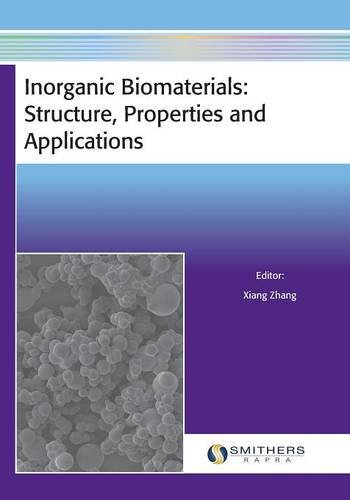

Most ebook files are in PDF format, so you can easily read them using various software such as Foxit Reader or directly on the Google Chrome browser.
Some ebook files are released by publishers in other formats such as .awz, .mobi, .epub, .fb2, etc. You may need to install specific software to read these formats on mobile/PC, such as Calibre.
Please read the tutorial at this link: https://ebookbell.com/faq
We offer FREE conversion to the popular formats you request; however, this may take some time. Therefore, right after payment, please email us, and we will try to provide the service as quickly as possible.
For some exceptional file formats or broken links (if any), please refrain from opening any disputes. Instead, email us first, and we will try to assist within a maximum of 6 hours.
EbookBell Team

0.0
0 reviewsZhang Xiang. (ed.) Inorganic Biomaterials - Structure, Properties and Applications 2014 [pdf 256sc 240c. 12.05mb]
Materials science holds the key to product development, improvement and failure analysis and, consequently, failure avoidance. Both in theory and practice, materials science is a complex combination of several scientific disciplines, including chemistry, physics, engineering and various technological disciplines. This book provides a practical guide to the use and applications of inorganic biomaterials. The first objective of this book is to introduce the concept of inorganic biomaterials, which includes bioceramics and bioglass. This concept is further extended to hybrid biomaterials consisting of inorganic and organic materials to mimic natural biomaterials. The second objective is to provide readers with information on biocompatibility, bioactivity and bioresorbability. The concept of the latter is important because of the increasing role resorbable biomaterials are playing in implant applications. The book also introduces a new concept on mechanical compatibility − 'mechacompatibility'. Almost all implant biomaterials employed to date, such as metal and ceramic implants, do not meet this biological requirement as they have a far higher modulus than any biomaterials in the body. The third objective is to provide readers with knowledge of the practical techniques that are used in the characterisation of biomaterials, including chemical, physical, biological, microscopy and mechanical. Some specialised techniques are also introduced such as synchrotron microcomputed tomography and magnetic resonance imaging. The fourth objective is to provide readers with important information on new biomaterial development for use in orthopaedic and other areas, including controlled release technology, hydroxyapatite and hybrid bioresorbable materials. The final objective of this book is to provide a guide to regulatory considerations, an area which is often…